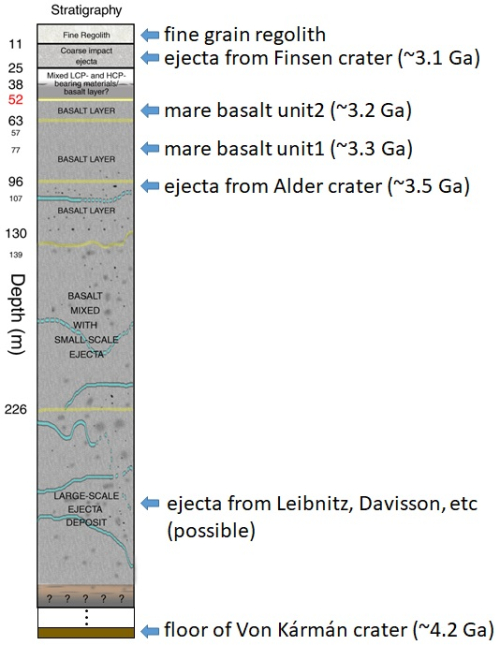The enormous South Pole-Aitken (SPA) basin is recognized as the largest and oldest impact basin on the Moon. The large impact may have penetrated the lunar crust and exposed upper mantle materials, and thus is of great importance in lunar exploration. On January 3, 2019, China’s Chang’E-4 (CE-4) mission, including a lander and the Yutu-2 rover, successfully landed on the floor of Von Kármán crater within the SPA, making it the first lunar farside soft landing mission in human history.
Sequence and timing are critical for understanding the geologic evolution of the landing zone. Based on the detailed CSFD (the crater size-frequency distribution) measurements performed within Von Kármán crater and its surroundings including Alder and Finsen craters, the team led by Prof. Yunzhao Wu from Purple Mountain Observatory of the Chinese Academy of Sciences established a chronological sequence of CE-4 landing zone to understand its geologic evolution.
Results showed that Von Kármán crater formed at around ~4.2 Ga, indicating that the SPA basin is older than ~4.2 Ga. The layers within Von Kármán crater, including ejecta from nearby Finsen and Alder craters and volcanic mare basalts, range between ~3.1-3.5 Ga, suggesting CE-4 landing zone has experienced a very complex evolutionary history.

Fig. 1 Locations of crater-counting areas and crater statistics results.

Fig. 2 The sketch map of the chronological sequence of the CE-4 landing zone.
The established chronological sequence is expected to provide geologic background knowledge for interpretations of spectral and radar data derived by Yutu-2 rover in the future.
The work has been published in Icarus. Please see the link below for more details: https://doi.org/10.1016/j.icarus.2020.114086